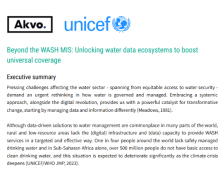Field Note: Implementing Community-Led Total Sanitation (CLTS) during the COVID-19 Pandemic: Lessons Learned from Kenya

Sanitation and hand hygiene are critical for disease prevention. Yet in Kenya national estimates find that two in five people in Kenya lack soap and water at home (WHO/UNICEF JMP, 2021). In addition, 9 per cent of the Kenyan population still practice open defecation (ibid.). In response to the sanitation and hygiene crisis, UNICEF partnered with the Ministry of Health, the Ministry of Water, Sanitation and Irrigation, county governments, Peace Winds Japan and LIXIL to accelerate the elimination of open defecation and facilitate access to basic sanitation in communities and schools under the Sanitation for Universal Health Coverage (S-UHC) Project, funded by the Government of Japan. The COVID-19 pandemic was confirmed to have reached Kenya on 12 March 2020, a few months before the start of the S-UHC Project. The COVID-19 pandemic posed serious challenges to the implementation of the S-UHC project. Restrictions of the movement of people and public gatherings were particularly difficult to overcome given the fact that CLTS encourages extensive community participation. Under the S-UHC project, 3,384 villages have been certified open defecation free (ODF) in nine focus counties, resulting in 761,400 more people living in ODF communities. Furthermore, 2,632,194 people received COVID-19 prevention messages including the beneficiaries of CLTS activities. UNICEF is reminded that sanitation approaches including CLTS need to be adaptive. In Kenya, the S-UHC project was successfully implemented despite the COVID-19 pandemic through various adaptions including limiting in-person meetings, where possible, and protecting frontline workers through PPE equipment and social distancing measures. In addition, radio stations played a pivotal role in disseminating key sanitation and hygiene messages to a large audience.




